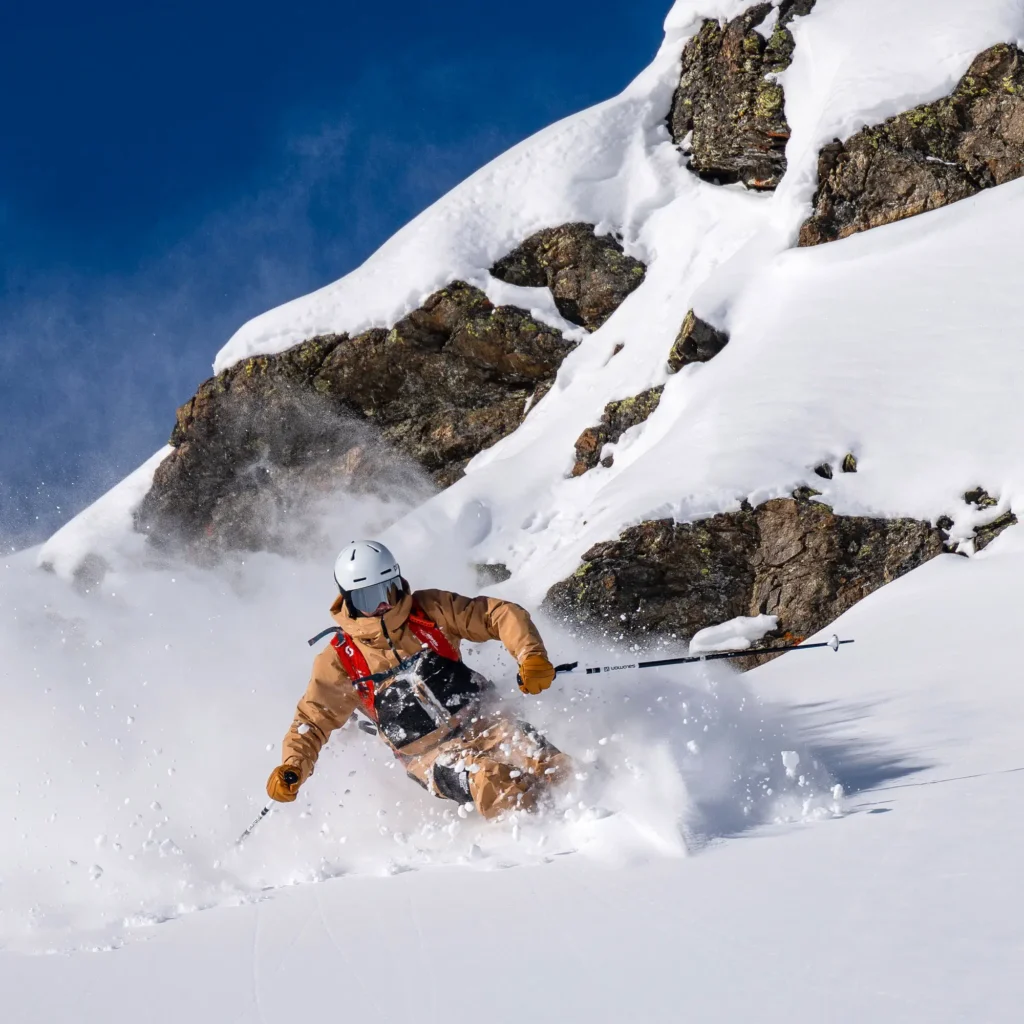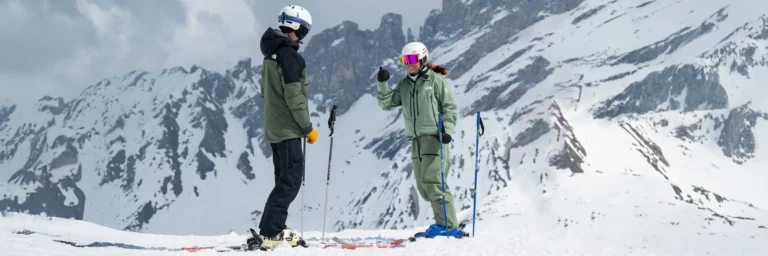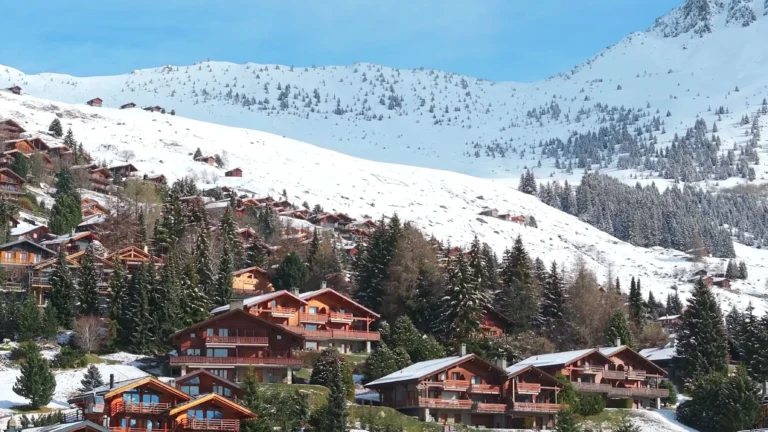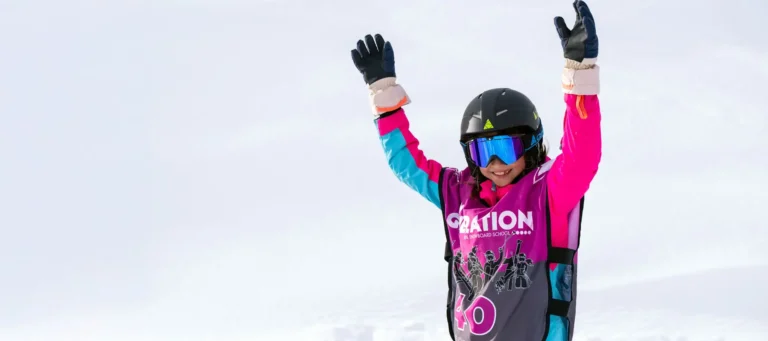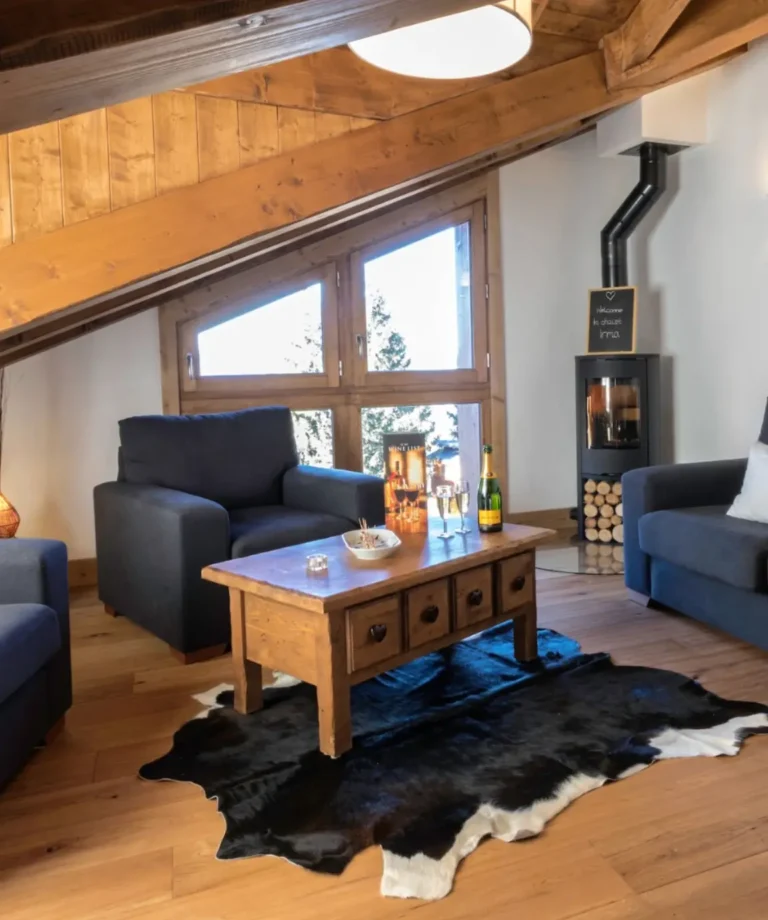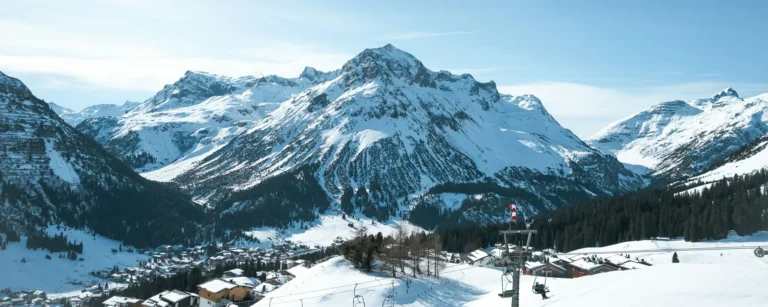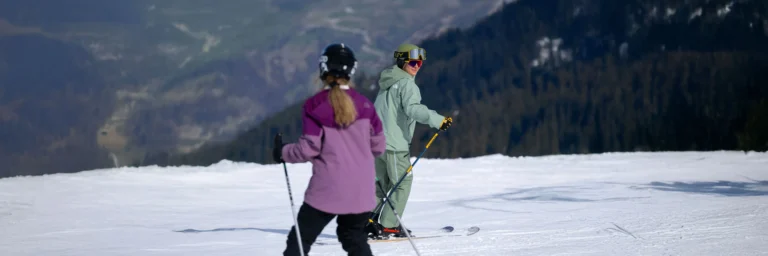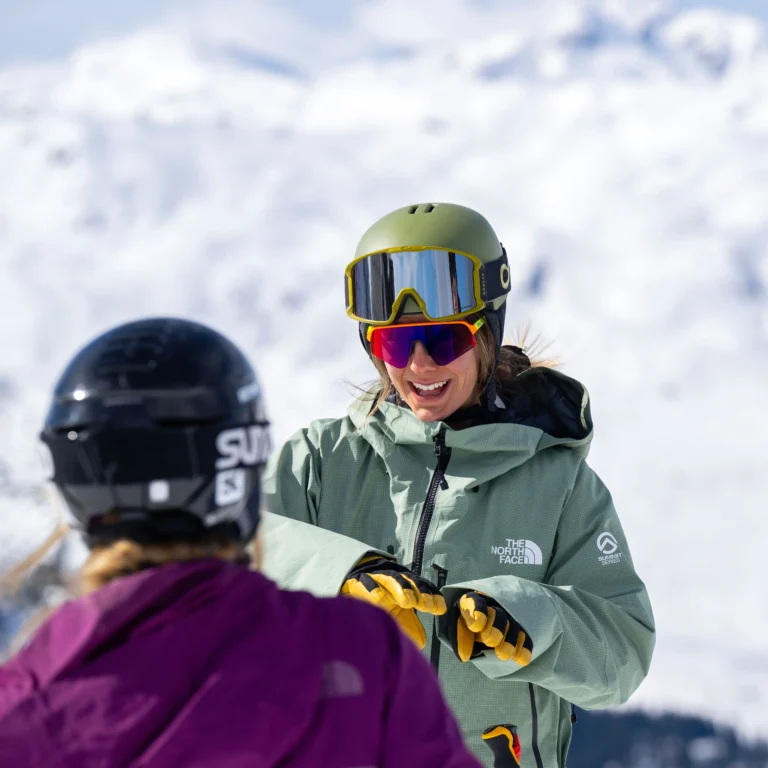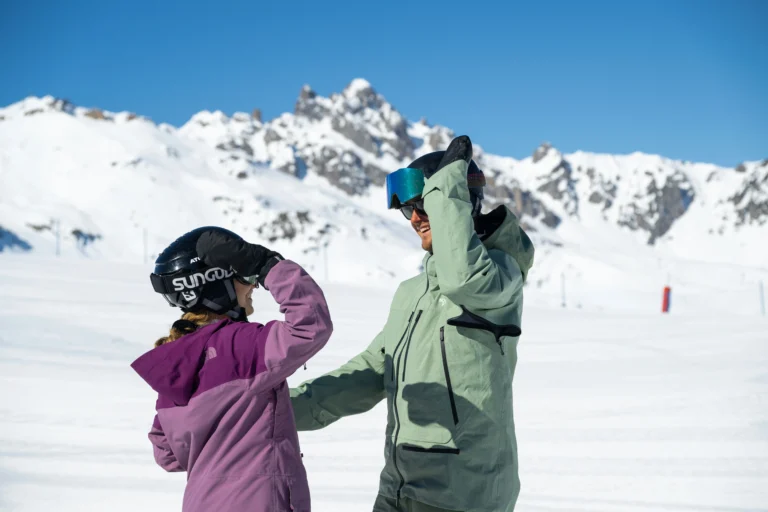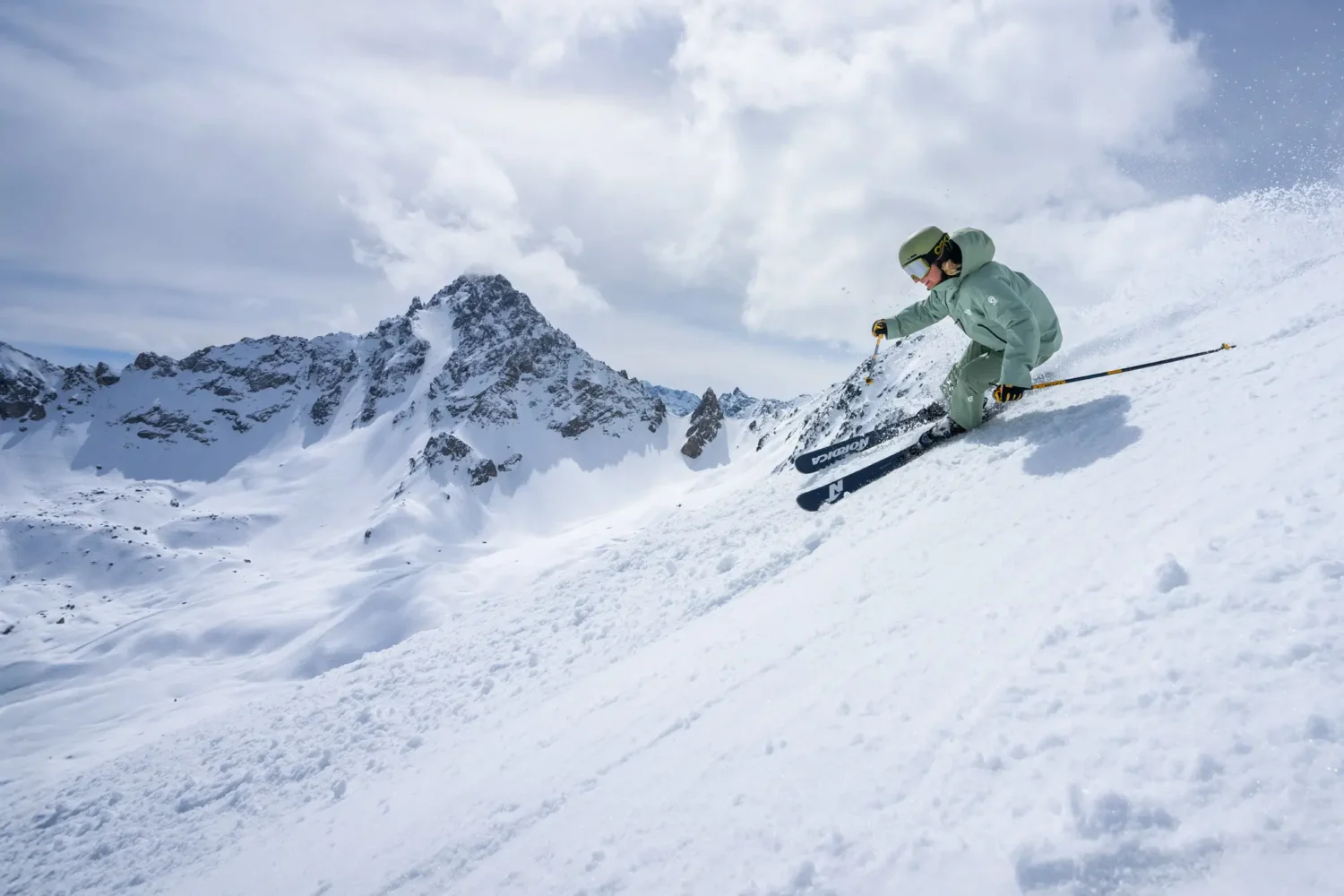When it comes to off-piste skiing, France is home to some of the most exciting off-piste terrain in the world. The French Alps offer a world-class off-piste experience from couloirs to tree-lined descents.
This guide examines the best off-piste ski resorts in France, what makes them stand out, and which routes to try when you’re there.
Before heading off-piste
Off-piste skiing is an experience like no other, but it carries inherent risks. Never go off-piste skiing without a capable and appropriately equipped partner or guide. Always carry avalanche safety equipment that you have familiarised yourself with. This should always include a transceiver, probe, and shovel. If you’re inexperienced with off-piste terrain, consider hiring a qualified guide who will help you safely access the terrain. It is also always important to consider the avalanche warning risk levels, bearing in mind that a low risk doesn’t mean no risk. Skiing off-piste in glaciated terrain always necessitates a guide.
Check out our Avalanche Safety Tips for more info on how to stay safe off-piste
With that in mind, here are the best resorts in France that are legendary for their off-piste skiing.
Chamonix
Chamonix is often known as the birthplace of extreme off-piste skiing, and for good reason. Situated at the base of Mont Blanc, the highest mountain in Western Europe, Chamonix offers a playground of dramatic peaks and daring descents that attract expert skiers from all over to ski some of France’s most iconic off-piste terrain. Chamonix’s high-altitude north-facing slopes preserve powder conditions for longer, making it a reliable off-piste destination throughout the ski season. This makes for one of the best off-piste ski resorts in France.
Chamonix Off-Piste Highlights:
Vallée Blanche
Probably the most famous off-piste skiing route in the world, Vallée Blanche is an epic 20-kilometre-long glacier run beginning next to the top of the Aiguille du Midi cable car at a lofty 3,842m. This iconic route offers unparalleled views of the Mont Blanc massif with its towering peaks, jagged ridges, and dramatic ice formations, which surround you with every turn. The descent features an unparalleled vertical drop of over 2,800m. Along the way, you’ll traverse snow bridges, crevasses and fallen seracs through powder fields on your way back down into the historic town of Chamonix. The lengthy descent from the top of the Aiguille du Midi through 13.7 kilometres of glaciated terrain is a truly unique experience found nowhere else in the Alps. While it’s an unforgettable experience, it’s crucial to note that this route is only suitable to be undertaken with a professional guide due to the potential hazards of glacier skiing. For those who take it on, the Vallée Blanche will be the gold standard benchmark of all future off-piste skiing excursions.
Les Rognes
Starting up in the Glacier des Rognons and running through to the vast Argentiere Glacier basin, this is a serious glacial line for those looking for a steeper descent than those found on the Vallee Blanche. To get started, head to the right-hand side of the rocky Rognon, then straight down. A distinct rocky ridge should follow on the skier’s left after the glacial section below the Rognon. Be wary of skiing too closely to this rocky ridge as it progresses downwards, as it ends in cliffs. Instead, head downwards to the right to avoid this hazard as you rejoin the Rognons Glacier. To make your way back to Chamonix traverse left to ski under the foot of the ridgeline until you have reached the La Pierre a Ric blue piste.
Chamonix Overview
Ideal for: Experienced backcountry enthusiasts seeking technical runs and epic glacier descents.
Chamonix Altitude: 1035m to 3842m
Chamonix Average Annual Snowfall: 461cm
Chamonix Average Snow Base Depth: 110cm
Chamonix Aspect: Northwesterly
Val d’Isère
Val d’Isère‘s backcountry skiing is world-renowned for its expansive off-piste terrain and quality accessible faces. It’s a favourite amongst those looking for sheer variety and untouched snowfields. The environment is more forgiving for intermediate skiers and riders, making it an excellent option for those who are new to off-piste or looking for a less intense experience.
Val d’Isère’s Off-Piste Highlights:
Le Fornet Trees
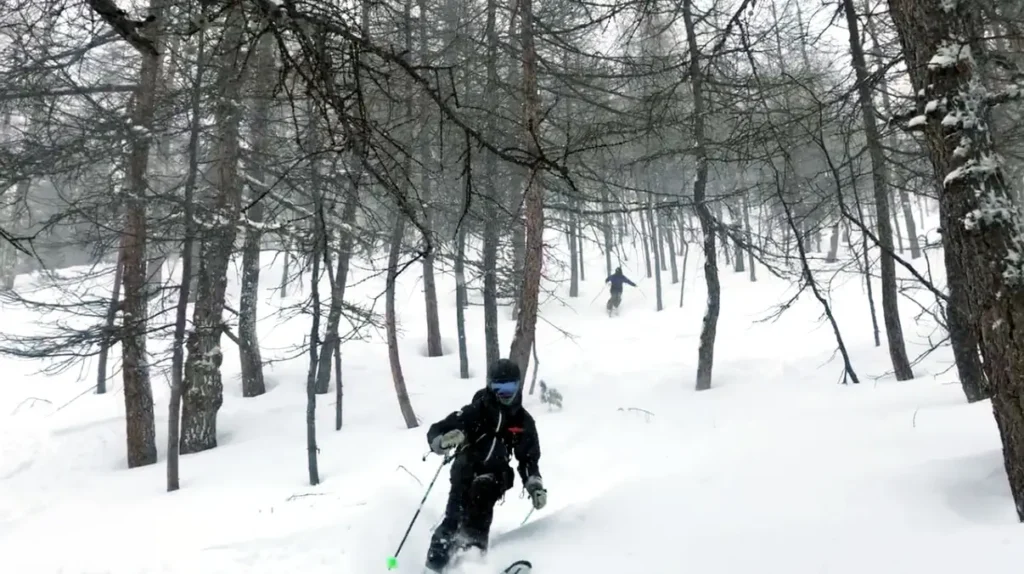
The Le Fornet area is undoubtedly the best Val d’Isere backcountry skiing location on days with limited visibility. The well-spaced trees that follow the Le Fornet lift line provide a new dimension compared to any powder field you’ve skied before, along with a natural shelter from heavy snowfall and wind and a unique and enchanting atmosphere created by the stillness of the forest. This run strikes the perfect balance between challenge and beauty, offering tight turns for the adventurous while remaining one of our accessible off-piste highlights. Perfect for those who love the tranquillity of tree runs combined with the thrill of untouched snow and the occasional breathtaking view of the alpine scenery peeking through the branches.
When off-piste skiing in Le Fornet during a heavy powder day, stick to the skier’s right between the trees to avoid the small valley that parallels the lift. This terrain eventually leads to the bottom half of the Mangard red piste. This offers an easy route back to the gondola, negating the walk that would be needed on other routes through the forest.
Le Col Pers
Le Col Pers is a Val d’Isère backcountry skiing classic that offers a steeper face than anything in the Le Fornet forest. Kicking off under the summit of Point du Montet, the starting location can be accessed easily via the Montet lift. Keeping to the skier’s right, this route splits the shoulders of Pointe Pers and Signal de L’Iseran. Just beyond the parting of Pointe Pers and Signal de L’Iseran, ensure to avoid the small lake that acts as the source of the Ruisseau de Lechoir. From here, it’s all downhill. The descent starts at a gradual pace but quickly builds into a steep 300-meter section of the face. This face often collects deep powder, which is out of sight for most skiers, and thus, it can stay untouched for longer. Tackling this epic face will transport you further from the civilisation of the pistes and further into nature at the foot of the 3601-meter-tall Tsanteleina. Following the L’Isere downstream will bring you back to the town that bears its name.
Val d’Isère Overview
Ideal for: Those after a real variety of first-class off-piste routes within one destination.
Val d’Isère Altitude: 1850m to 3455m
Val d’Isère Average Annual Snowfall: 461cm
Val d’Isère Average Maximum Snow Base Depth: 250cm
Val d’Isère Aspect: Predominantly South
La Grave
La Grave is undoubtedly one of the best off-piste ski resorts in France, offering an unfiltered off-piste skiing experience. There are no groomed pistes or safety nets in La Grave. Experienced skiers will undoubtedly get the most out of La Grave, ski technique alone isn’t enough here, with a strong understanding of mountaineering being key to being safe in La Grave. La Grave stands out as one of the most unique resorts in the world, with a strong claim to being the most off-piste focused, complete with a 2,100 m vertical drop.
La Grave Off-Piste Highlights:
Vallons de la Meije
Vallons de la Meije offers the perfect gateway into skiing La Grave’s technical off-piste skiing terrain.
Glaciers de la Meije II lift will take you up to 3200m. At the top station, there is a choice between the Vallons de la Meije and the Vallons de Chancel. The Vallons de la Meije takes you below the Meije and Râteau glaciers in a stunning environment of seracs and rocky bars. The Vallons de la Meije offers a slightly more technical route than the Vallons de Chancel. It does still, however, act as the perfect initiation to La Grave. The Vallons de la Meije will eventually reach the Peyrou d’Amont mid-station at 2400m. This gives you the option to continue on skis right the way down to the village of La Grave through a forest of larch trees or download on the lift if snow conditions aren’t favourable for lower altitude skiing.
La Chirouze
If Vallons de la Meije is the gateway to what La Grave offers, then La Chirouze is amongst the toughest that it has in store. At 2300 vertical Metres, La Chirouze is a steep and exposed pitch. To get started, you’ll need to make your way to the top of the Girose drag lift, which is just over 3,500 meters. From here, head almost directly under the Dome de la Lauze following the fall line. You’ll need to stay towards the skier’s right to avoid the exposed rock and seracs.
Ski the tongue of the glacier to the right of a shoulder. When following the series of bowls and gullies, ensure you don’t miss the traverse off left. Without doing so, you will not avoid the deep gorge below. When you reach the obvious square rock in the middle of an exposed slope, continue descending very slightly skier’s left until two larch trees.
The next section requires a traverse. A rope is a great idea during this section, as falling at this point could be a fatal error. From here onwards, you’re on the home straight. The steep final powder-filled pitch leads to a bridge which crosses the main road to La Grave. This marks the point at which you’ve conquered La Chirouze. Once at the main road back to La Grave, it can be a great idea to have a car parked up on the west side of Le Grand Clot if possible or have other means of transport as without this there is a long walk back to civilisation and no doubt you’ll be fatigued from your descent.
La Grave Overview
Ideal for: The purest lift-accessed off-piste experience in the French Alps.
La Grave Altitude: 1450m to 3550m
La Grave Average Annual Snowfall: 349cm
La Grave Maximum Snow Base Depth: 170cm
La Grave Aspect: North
Tignes
Tignes is a resort that caters to everyone, but its off-piste skiing opportunities are particularly spectacular for those looking to venture beyond the marked runs. Combine this with high-altitude snow reliability, and Tignes is undoubtedly one of the best off-piste resorts in France.
Off-Piste Highlights:
Les Vallons de la Sache
This stunning off-piste area is a true gem for adventurous skiers, offering an impressive altitude drop of 1,200m. The route starts steep and testing before transforming, becoming more lengthy and mellow. This gives you a chance to take in the beauty of the Sache valley. The terrain on this route is incredibly diverse, featuring wide, smooth fields ideal for letting the skis run with higher speed, longer turns and technical, narrow passages that will challenge experienced skiers. The route flows from the snowfields above Tignes Le Lac through to the breathtaking alpine snow-laden trees of Tignes Les Brevieres, showcasing the variety of terrain that Tignes has at its disposal. Its convenient accessibility from the top of the TSD 6 Marais or Aiguille Percee lift makes it a favourite among skiers looking for a lengthy lift accessible off-piste in Tignes. Perfect for those seeking both variety and a touch of challenge, Les Vallons de la Sache is a must-do route in Tignes.
The Fingers (Les Tufs Couloirs)
This series of challenging couloirs offers steep, exhilarating lines that will test even the most experienced riders. Known for its narrow passages and highly technical terrain, it demands precision, focus, and unwavering confidence at every turn. The sharp drops and tight chutes make these lines both technically demanding and unforgiving. Those daring enough to take it on are rewarded with breathtaking views of Espace Killy and of Val Claret below before taking on a real test of a descent. Ideal for those who are getting bored of run-of-the-mill off-piste skiing, the satisfaction of having conquered one of the most iconic challenges in alpine freeriding will leave a lasting impression long after you’ve reached the bottom.
Tignes Overview
Ideal for: Skiers who crave variety and easily accessible terrain.
Tignes Altitude: 1500m to 3550m
Tignes Average Annual Snowfall: 653cm
Tignes Maximum Snow Base Depth: 265cm
Tignes Aspect: Varied Aspects
Courchevel
While Courchevel is often associated with luxury, it also offers excellent off-piste opportunities on its doorstep, much of which is far more approachable than others featured on this list. This means that it can be a great place to get started on practising your off-piste technique.
Off-Piste Highlights:
Les Avals
Despite being close to the boundary of the Courchevel 1650 ski area, entering Les Aval offers a completely fresh perspective on the area. The lack of infrastructure and surrounding peaks make the valley seem more isolated than it actually is. The descent isn’t the steepest but is long, flowing, and celebrated for its consistent powder conditions. You’ll want to leave the slopes behind once you reach the top of either Roc Merlot or the Chamrossa lifts to enter the long, secluded valley. The surrounding peaks and expansive views create a peaceful atmosphere, with the valley shielding you from the crowds of the pistes. At the tail of Les Avals, a relatively flat section will test your cardio. Be careful not to stop too long, as this section can be particularly perilous with steep slopes overlooking the trail. It’s a good idea to keep the tempo up while enjoying the valley’s beauty.
The 6th Couloir
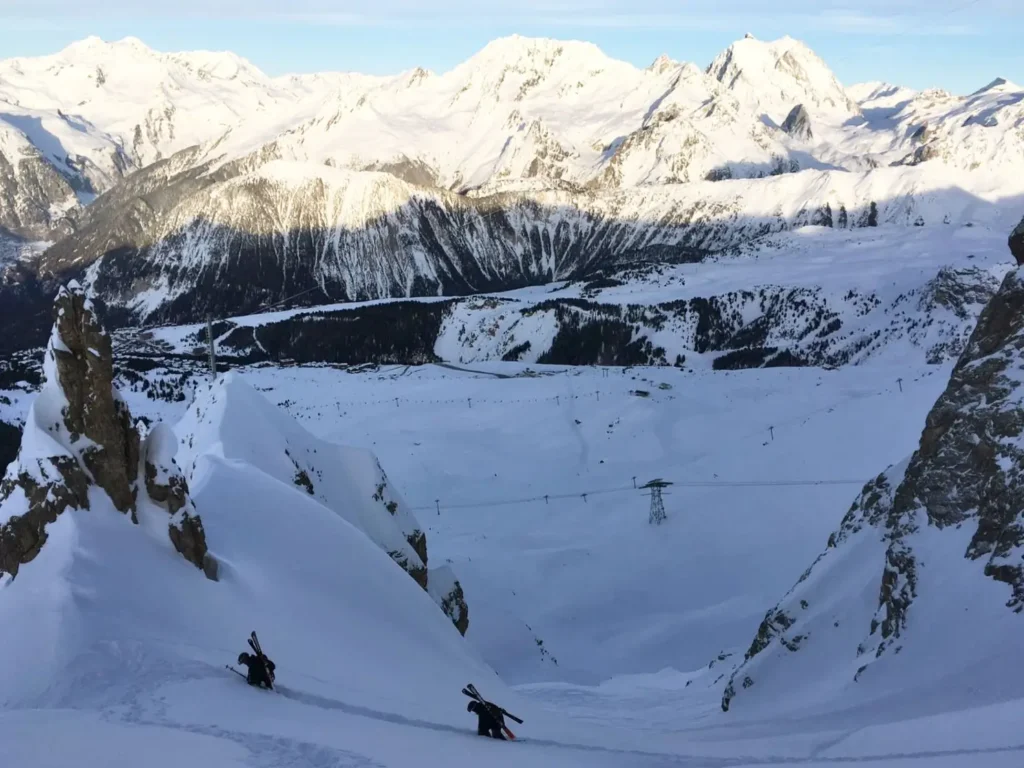
In the shadow of the Dent de Burgin, the 6th Couloir is often overlooked. Despite being a stone’s throw from the famous Grand Couloir, the 6th Couloir hides in plain sight. Its steep face is visible from most of Courchevel in 1850 and many of the slopes in 1650. The 6th couloir has great views of Courchevel 1850 and the valley beyond. Its steep climb and descent characterise the 6th couloir. This can mean that even during busier times, the snow remains much less tracked out than in the surrounding off-piste in Courchevel. If the snow conditions are right, you won’t ski a better section of off-piste right on the doorstep of 1850. Accessing the 6th couloir can be a treat, too. The most common route is via the Saulire gondola before traversing above the grand couloir, following the ridge towards the Dent de Burgin. When skiing towards the 6th couloir down the 5th, ensure that you traverse close to the rock wall at the top of the snow pitch. This will reduce your climb up the 6th couloir and help you to maintain a safe distance between yourselves and the cliff below. Most of the journey from La Saulire to Dent de Burgin will give you spectacular views of Courchevel and Meribel’s valleys.
Courchevel Overview
Ideal for: Those looking for a great place to cut their teeth on their first few off-piste expeditions.
Courchevel Altitude: 1300 to 2730m
Courchevel Average Annual Snowfall: 389cm
Courchevel Maximum Snow Base Depth: 232cm
Courchevel Aspect: Predominantly North Facing
Your turn to discover the best off-piste skiing that these resorts have to offer
If you’d like to explore the off-piste in the resorts featured here, we would always advise skiing with the expertise of a guide or Instructor. Book one of our instructors today to safely discover the best off-piste these resorts have to offer.
